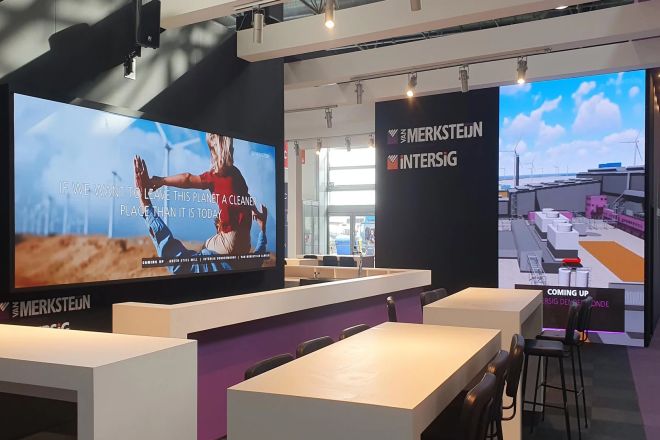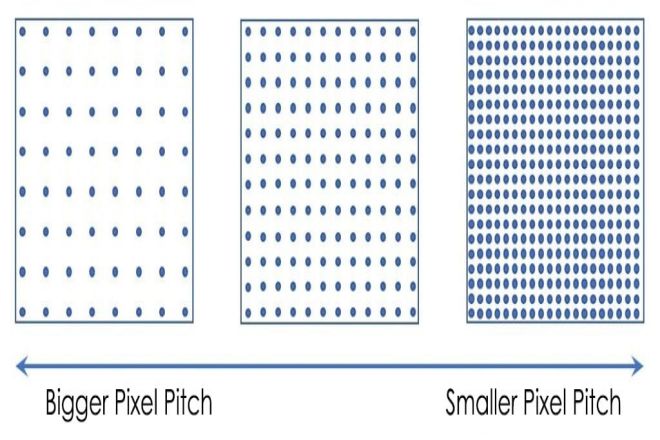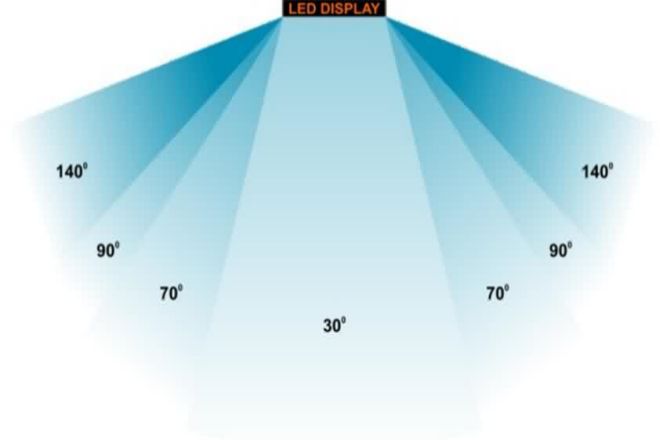소개

과학기술의 급속한 발전으로 인해, LED 디스플레이 have become an indispensable part of modern society. Whether in bustling commercial districts, stadiums, or important public venues, LED displays attract people’s attention with their unique charm.
As an important medium for information dissemination, LED displays not only bear the important tasks of displaying advertisements and transmitting information but also directly reflect the image of the city.
However, with the increasing number of LED display products on the market, how to choose an LED display with excellent performance and reliable quality has become the focus of people’s attention.
1. Brightness and contrast
- 명도
Brightness is one of the important indicators for measuring the performance of LED displays, which directly determines the clarity of the display when viewed during the day and at night.
High-brightness displays can still maintain a clear picture in direct sunlight or strong lighting environments, ensuring effective transmission of information. At the same time, at night or in low-light environments, appropriately reducing the brightness can reduce stimulation to the human eye and provide a more comfortable viewing experience.
The brightness of an LED display is usually determined by multiple factors, such as the luminous intensity of the LED lamp beads, the reflectivity of the screen surface, and the heat dissipation design of the display. Modern LED display manufacturers continue to improve the brightness of the display by using high-quality LED lamp beads, optimizing the drive circuit design, and using advanced heat dissipation technology.
- 차이
Contrast is another important performance indicator of LED display, which reflects the brightness difference between the brightest and darkest areas of the display.
High-contrast displays can present richer color levels and grayscale performance, making the picture more vivid and realistic. For viewers, high-contrast displays can provide a better visual experience, especially when watching high dynamic range (HDR) content, which can present a more realistic picture effect.
The contrast of LED displays is affected by many factors, including the uniformity of LED lamp bead light emission, screen flatness and surface reflectivity, grayscale level, and dot pitch. Modern LED display manufacturers continue to improve the contrast performance of the display by using advanced grayscale calibration, brightness compensation, and point-by-point correction.
- The balance between brightness and contrast
Brightness and contrast play a complementary role in the performance of LED displays. Too high brightness may cause the picture to be too dazzling, while too low contrast will make the picture appear blurred.
Therefore, in practical applications, it is necessary to achieve a balance between brightness and contrast through technical means according to the specific use environment and needs.
In order to achieve the best effect, modern LED display manufacturers usually provide brightness and contrast adjustment functions, and users can make appropriate adjustments according to their actual needs.
At the same time, by optimizing the display’s drive circuit design, using high-quality LED lamp beads and precise correction technology, the brightness of the entire screen can be ensured to be consistent, further improving the image quality.
2. Resolution and pixel density

1). Resolution
The resolution of an LED display refers to the number and arrangement of screen pixels, usually expressed in the form of horizontal pixels*vertical pixels, such as the common 1920×1080 resolution.
기능:
Resolution plays a vital role in LED displays, which directly determines the clarity of the picture. Higher resolution means more pixels on the screen, which can present more delicate and richer image details.
예:
Taking 1920×1080 resolution as an example, it means that there are 1920 pixels horizontally and 1080 pixels vertically. These pixels are arranged in a matrix form, together forming a high-resolution display.
2). Pixel density
Pixel density (PPI, Pixels Per Inch) refers to the number of pixels that can be displayed per inch in the diagonal length of the screen, which reflects the density of screen pixels.
- 영향:
Pixel density has a direct impact on the fineness of the picture. The higher the pixel density, the more pixels per unit area, the finer the picture, and the more details can be displayed.
- 애플리케이션 시나리오:
Different application scenarios have different requirements for pixel density. For example, scenes such as high-definition video playback and advertising that require delicate pictures are suitable for using LED displays with high pixel density, while scenes such as text display and simple pattern display have relatively low requirements for pixel density.
- Optimal value:
The optimal pixel density depends on the specific application requirements and viewing distance. Generally speaking, the closer the viewing distance, the higher the pixel density requirement. For example, in indoor advertisements viewed at close range, a higher pixel density is usually required to ensure the clarity of the picture.
3). Correlation between resolution and pixel density
- Relationship:
Resolution and pixel density are interrelated. High resolution usually means high pixel density, but the two are not completely equivalent because resolution is a fixed number of pixels, while pixel density is affected by screen size. At the same resolution, the smaller the screen size, the higher the pixel density; the larger the screen size, the lower the pixel density.
- Balance:
Reducing costs while ensuring clarity is a problem that needs to be considered when choosing an LED display. Although high resolution and high pixel density can bring better visual effects, they will also increase manufacturing costs.
Therefore, when choosing an LED display, it is necessary to weigh the actual needs and budget and choose the resolution and pixel density that best suits your application scenario.
4). Optimization strategy
In order to reduce costs while ensuring clarity, the following optimization strategies can be adopted:
Choose the appropriate resolution and pixel density according to the application scenario and viewing distance.
Use advanced display technology and image processing algorithms to improve pixel utilization and display effects.
Optimize the driving circuit and heat dissipation design of the LED display to reduce manufacturing costs and improve product reliability.
3. Color gamut and color accuracy
1). Color gamut
The color gamut refers to the range of colors that a device (such as an LED display) can express or the sum of colors that the device can produce. Simply put, it represents how many different colors a display device can display.
- Importance in LED displays:
The size of the color gamut directly affects the richness of the colors that the LED display can display. A wide color gamut means that the display can present more and richer colors, resulting in a more realistic and vivid visual experience.
For example, color gamut standards such as NTSC, sRGB, Adobe RGB, and DCI-P3 are tools used to measure and compare the color gamut range of different devices.
- Specific example:
The sRGB color gamut is a color standard widely used in computers and the Internet, and its number of colors covers about 30% of the CIE-xy chromaticity diagram. The Adobe RGB color gamut is wider and can cover more color space, which is suitable for professional-level image processing.
2). Color accuracy
- 중요성:
Color accuracy refers to the ability of LED displays to accurately restore the original image color, including color reproduction and color consistency. The higher the color reproduction, the closer the color presented by the display is to the color of the original image; the better the color consistency, the color presented by the display is consistent at different brightness and different angles.
- Practical application:
Color accuracy is particularly important in fields such as medical imaging, artistic creation, and film and television production. For example, in the field of medical imaging, doctors need to rely on accurate color information to diagnose diseases; in the field of artistic creation, artists need to ensure that their works can present the most realistic and delicate colors on display.
3). Methods to improve the color performance of LED displays
- Advanced color management technology:
The color performance of LED displays can be optimized by adopting advanced color management technologies, such as color space conversion and color mapping. These technologies can ensure that the display can maintain accurate color reproduction and consistency when displaying different colors.
- Calibration method:
Regular color calibration of LED displays is also an important means to improve color accuracy. Common calibration methods include using professional color calibration instruments and software to measure and adjust the color parameters of the display to ensure the accuracy and stability of its color output.
- Hardware support:
In addition, some advanced LED displays are also equipped with specialized color processing hardware, such as high-performance color processors and color management chips, which can further improve the color performance and processing capabilities of the display.
4. Viewing angle and uniformity

1). Viewing angle
- Definition and impact:
The viewing angle refers to the maximum angle range at which the audience can clearly see the displayed content when viewing the LED display from different angles. The size of the viewing angle directly affects the audience’s viewing experience, especially in large public places or outdoor advertisements. A wider viewing angle can ensure that more viewers can see clear pictures at different positions.
- Achieving a wide viewing angle:
In the design of LED display screens, achieving a wide viewing angle mainly depends on the design and packaging technology of LED chips. By optimizing the light-emitting angle of LED chips and the design of packaging lenses, the viewing angle range can be expanded. In addition, some high-end LED display screens will also use multi-pixel sharing technology or special optical design to further improve the viewing angle performance.
2). Uniformity
- 밝기 균일성:
Brightness uniformity refers to the consistency of brightness at each point on the LED display screen. A display screen with uniform brightness can present the same brightness level at different positions, avoiding the phenomenon of local over-brightness or over-darkness, thereby improving the overall quality of the picture.
- Color uniformity:
Color uniformity refers to the consistency of color at each point on the display screen. A display screen with uniform color can ensure that the color performance of the picture is consistent when viewed from different positions, avoiding color deviation or distortion.
- 영향:
Uniformity has an important impact on picture quality. Uneven brightness may cause bright spots or dark areas on the screen, affecting the viewing experience, while uneven color may cause color deviation or distortion on the screen, reducing the realism and credibility of the picture.
3). Relationship between viewing angle and uniformity
- Relationship:
Viewing angle and uniformity are interrelated in the performance of LED display screens. On the one hand, the design of a wide viewing angle needs to take into account the luminous angle and packaging technology of LED chips, and these factors will also affect the uniformity of the display screen; on the other hand, good uniformity can ensure that the audience can get a consistent viewing experience when watching from different angles, thereby further improving the viewing angle effect.
- Optimize design and manufacturing process:
To improve the viewing angle and uniformity of LED display screens, the design and manufacturing process can be optimized from the following aspects:
Select high-quality LED chips and packaging materials to ensure the luminous performance and stability of LEDs;
Optimize the packaging lens design of LED chips to expand the viewing angle range and improve brightness uniformity;
Use advanced drive circuits and control systems to ensure that each LED pixel can be precisely controlled and adjusted;
Strengthen the heat dissipation design of the display screen to ensure that good uniformity and stability can be maintained under high brightness and high load operation;
Carry out strict quality control and testing during the production process to ensure that each display screen can meet the predetermined viewing angle and uniformity requirements.
5. Reliability and stability
1). Reliability
The reliability of LED display screens is mainly reflected in their performance under long-term operation and harsh environments. High-quality LED display screens usually have the following characteristics to ensure reliability:
Selection of high-quality LED chips: LED chips are the core components of display screens. Selecting high-quality LED chips can ensure long-term stable operation and reduce failure rates.
Heat dissipation design: Reasonable heat dissipation design can effectively reduce the temperature of the display screen and prevent performance degradation or damage caused by overheating. Common heat dissipation technologies include heat sinks, fans, heat pipes, etc.
Protection level: LED display screens usually have a higher protection level, such as IP65 or higher, and can resist erosion from external environments, such as dust and water droplets.
2). Stability
The stability of LED display screens is mainly affected by environmental factors such as temperature and humidity. To maintain the stability of the display screen in different environments, the following measures can be taken:
Temperature control: The operating temperature of the display screen is automatically adjusted through the built-in temperature control system to prevent excessively high or low temperatures from affecting the performance of the display screen.
Humidity control: Humidity sensors and dehumidification devices are set inside or around the display screen to keep the display screen running within a suitable humidity range.
Lightning protection and anti-static design: Consider lightning protection and anti-static measures in the design of the display screen to protect the display screen from damage by lightning and static electricity.
3). Methods to improve reliability and stability
Strict quality control: Strict quality control is carried out in all links, from raw material procurement to production and manufacturing, to ensure that each link meets quality requirements.
Comprehensive testing: Comprehensive testing of the display screen, including brightness testing, color testing, temperature testing, viewing angle testing, response time testing, display uniformity testing, pixel testing, etc., to ensure that all performance of the display screen meets the design requirements.
Regular maintenance: Clean, inspect and repair the display screen regularly to detect and deal with potential problems in time and keep the display screen in good condition.
Technical training: Provide technical training for users to let them understand how to use and maintain the display screen correctly to avoid failures caused by improper operation.
6. Energy saving, environmental protection and intelligence

1). Energy saving and environmental protection
LED display screens have significant advantages in energy saving and environmental protection, which are mainly reflected in the following aspects:
- 저전력 소비:
LED display screens have high energy utilization efficiency. Compared with traditional display screens, such as LCD screens or fluorescent lamp screens, LED display screens can produce brighter light with lower energy consumption.
This means that while providing the same display effect, LED display screens can save a lot of electricity, thereby reducing energy consumption and operating costs.
- 긴 수명:
LED display screens have a long service life of more than tens of thousands of hours. This reduces the frequency of replacement and maintenance costs, as well as the generation and disposal of waste, further reflecting its environmental protection.
2). No harmful substances:
LED display screens do not contain harmful substances such as mercury and lead, nor do they produce ultraviolet and infrared radiation. Therefore, the use of LED display screens can avoid pollution and harm to the environment and the human body.
- Recyclable:
Most of the materials of LED display screens can be recycled, reducing resource consumption and waste emissions, which is in line with the concept of environmental protection.
3). Intelligent
Intelligent technology is increasingly widely used in LED display screens, mainly reflected in the following aspects:
Remote monitoring: Through remote monitoring technology, the operating status and energy consumption of LED display screens can be understood in real-time, which is convenient for the timely detection and processing of problems.
Automatic brightness adjustment: According to the changes in ambient light, the LED display screen can automatically adjust the brightness, which not only ensures the display effect but also reduces energy consumption.
Automatic content update: Through AI technology and remote services, operators can modify and manage the content on the LED display screen in real time and realize fast and efficient information updates.
Intelligent analysis: By combining big data and AI technology, LED display screens can analyze the audience’s viewing habits, preferences, etc., and provide advertisers with more accurate advertising strategies.
The role of energy conservation, environmental protection, and intelligence in promoting the development of the LED display industry
Promoting industrial upgrading: The application of energy conservation, environmental protection, and intelligent technologies has promoted the industrial upgrading of the LED display industry, making LED display screens significantly improved in terms of visual effects, energy consumption, and service life.
Expanding application areas: With the continuous development of intelligent technology, the application areas of LED display screens are also constantly expanding. In addition to traditional advertising, information release, and other fields, LED display screens are also widely used in smart cities, smart transportation, medical health, and other fields.
Improving user experience: The application of intelligent technology makes the presentation of LED display screens more intelligent and personalized and can automatically adjust and optimize according to user preferences and habits, improving user experience.
Enhancing market competitiveness: LED display screens with energy conservation, environmental protection, and intelligent characteristics are more competitive in the market and can meet customers’ needs for high quality, high efficiency, environmental protection, and energy saving.
Promoting sustainable development: The energy-saving and environmental protection characteristics of LED display screens help reduce energy consumption and environmental pollution, which is in line with the concept of sustainable development. At the same time, the application of intelligent technology also promotes the rational use and recycling of resources, further promoting sustainable development.
결론
In summary, a high-quality LED display needs to have many performance characteristics, including brightness and contrast, resolution and pixel density, color gamut and color accuracy, viewing angle and uniformity, reliability and stability, etc.
At the same time, with the continuous development of energy-saving, environmental protection, and intelligent technology, the LED display industry will also usher in a broader development prospect.
LED 디스플레이에 대해 더 알고 싶다면, 우리에게 연락해주세요.
